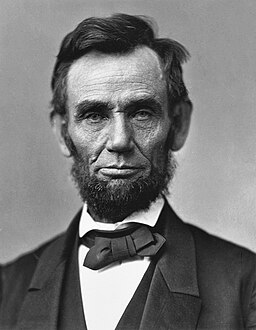 W
WAbraham Lincoln was an American statesman and lawyer who served as the 16th president of the United States from 1861 to 1865. Lincoln led the nation through the American Civil War, the country's greatest moral, constitutional, and political crisis. He succeeded in preserving the Union, abolishing slavery, bolstering the federal government, and modernizing the U.S. economy.
 W
WThe Papers of Abraham Lincoln is a documentary editing project dedicated to identifying, imaging, transcribing, annotating, and publishing online all documents written by or to Abraham Lincoln during his lifetime (1809–1865).
 W
WUSS Abraham Lincoln (CVN-72) is the fifth Nimitz-class aircraft carrier in the United States Navy. She is the second Navy ship to have been named after the former President Abraham Lincoln. Her home port is NAS North Island, and she is a member of the United States Pacific Fleet. She is administratively responsible to Commander, Naval Air Forces Pacific, and operationally served as the flagship of Carrier Strike Group Nine and host to Carrier Air Wing Two until 2012. She was returned to the fleet on 12 May 2017, marking the successful completion of her refueling and complex overhaul carried out at Newport News Shipyard. On 5 May 2019 USS Abraham Lincoln was deployed to the Middle East as the flagship for Carrier Strike Group 12 and Carrier Air Wing Seven assigned to her.
 W
WThe Abraham Lincoln Association (ALA) is an American association advancing studies on Abraham Lincoln and disseminating scholarship about Lincoln. The ALA was founded in 1908 to lead a national celebration of Lincoln's 100th birthday and continues to mark his birthday with an annual banquet and symposium. The ALA holds no archive of materials and instead functions primarily as a scholarly forum. It remains "the nation's oldest and largest Lincoln organization."
 W
WThe Abraham Lincoln Bicentennial Commission (ALBC) was the Congressionally created 14-member federal commission focused on planning and commemorating the 200th birthday of the United States' 16th president on February 12, 2009. The commission served for ten years, from 2000 to 2010. Its official successor organization, announced in 2011 with an expanded board and broadened mission, is The Abraham Lincoln Bicentennial Foundation.
 W
WThe Abraham Lincoln Institute (ALI), founded in 1997, is a non-profit organization promoting scholarly research on the subject of Abraham Lincoln. The institute utilizes dissertation prizes, book awards, and an annual Lincoln symposium to encourage research and scholarship on the life and legacy of Abraham Lincoln. These annual symposia, presented at the National Archives in College Park, MD and more recently at Ford's Theatre in Washington, DC, are a venue for both emerging and highly renowned Lincoln scholars to present the findings of their current research. They are attended by the general public and have been frequently filmed by organizations such as the National Archives and C-SPAN.
 W
WThe Abraham Lincoln National Heritage Area is a National Heritage Area in central Illinois telling the story of Abraham Lincoln. A National Heritage Area is a federal-designated area intended to encourage historic preservation and an appreciation of the history and heritage of the site. While National Heritage Areas are not federally owned or managed, the National Park Service provides an advisory role and some technical, planning and financial assistance.
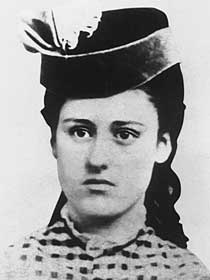 W
WGrace Greenwood Bedell Billings was an American woman, notable as a person whose correspondence, at the age of eleven, encouraged Republican Party nominee and future president Abraham Lincoln to grow a beard. Lincoln later met with Bedell during his inaugural journey in February 1861.
 W
WAbraham Lincoln served as a volunteer in the Illinois Militia April 21, 1832 – July 10, 1832, during the Black Hawk War. Lincoln never saw combat during his tour but was elected captain of his first company. He was also present in the aftermath of two of the war's battles, where he helped to bury the militia dead. He was mustered in and out of service during the war, going from captain to private and finishing his service in an independent spy company commanded by Captain Jacob Early.
 W
WBorn Peter Cartwright, Jr., or better known as Peter Cartwright, and also known as "Uncle Peter", "Backwoods Preacher", "Lord's Plowman", "Lord's Breaking-Plow", and "The Kentucky Boy", was an American Methodist, revivalist, preacher, in the Midwest, as well as twice an elected legislator in Illinois. Cartwright, a Methodist missionary, helped start America's Second Great Awakening, personally baptizing twelve thousand converts. Opposed to slavery, Cartwright moved from Kentucky to Illinois, and was elected to the lower house of the Illinois General Assembly in 1828 and 1832. In 1846 Abraham Lincoln defeated Cartwright for a seat in the United States Congress. As a Methodist circuit rider, Cartwright rode circuits in Kentucky and Illinois, as well as Tennessee, Indiana and Ohio. His Autobiography (1856) made him nationally prominent.
 W
WA Shenandoah is a style of facial hair or beard. The hair is grown full and long over the jaw and chin, meeting with the sideburns while the hair above the mouth is shaved.
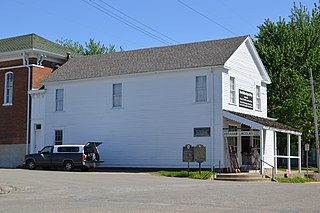 W
WThe Col. Matthew Rogers Building, also known as the Abraham Lincoln Long Nine Museum, is a historic building located at 200 S. Main St. in Athens, Illinois. The building was constructed circa 1832 by Colonel Matthew Rogers, who ran a store in the building. As Rogers was also postmaster of Athens, he moved the city's post office to his store. Abraham Lincoln, who was postmaster of New Salem at the time, frequently visited the post office during the 1830s to fetch mail. Josiah Francis purchased the store on a mortgage from Rogers in 1837. In the same year, Athens held a banquet in the building to honor Lincoln and eight other Illinois legislators for moving the state capital to Springfield; the nine men were known as the "Long Nine", as they were all over 6 feet (1.8 m) tall. When Rogers sued Francis for failing to keep up with his mortgage payments in 1840, Lincoln again became involved with the store, as his firm represented Rogers in court; Rogers won the case by default. After Rogers died in 1848, the building continued to be used as a store. The building is now a museum documenting Lincoln and the Long Nine's history and connection to the building.
 W
WThe United States Mint has minted numerous commemorative coins to commemorate persons, places, events, and institutions since 1848. Many of these coins are not intended for general circulation, but are still legal tender. The mint also produces commemorative medals, which are similar to coins but do not have a face value, and therefore are not legal tender.
 W
WWilliam H. Crook was one of President Abraham Lincoln's bodyguards in 1865. After Lincoln's assassination, he continued to work in the White House for a total of more than 50 years, serving 12 presidents.
 W
WThis is the electoral history of Abraham Lincoln. Lincoln served one term in the United States House of Representatives from Illinois (1847–1849). He later served as the 16th President of the United States (1861–1865).
 W
WFido was a yellow mongrel dog owned by Abraham Lincoln and kept by the family for a number of years prior to Lincoln's presidency, and became a presidential pet during Lincoln's presidency, although he remained in Springfield, Illinois.
 W
WWilliam Mentor Graham was an American teacher best known for tutoring Abraham Lincoln and giving him his higher education during the future President's time in New Salem, Illinois. Graham was born near Greensburg, Kentucky. He died in 1886 in Blunt, South Dakota.
 W
WWilliam G. "Slicky Bill" Greene, Jr. (1812–1894) was a friend of Abraham Lincoln and a businessman in Menard County, Illinois. Greene founded Tallula, Illinois in 1857, and Greenview, Illinois is named after him.
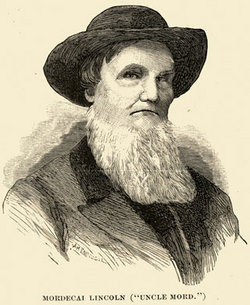 W
WJohn Hanks was Abraham Lincoln's first cousin, once removed, his mother's cousin. He was the son of William, Nancy Hanks Lincoln's uncle and grandson of Joseph Hanks.
 W
WAbraham Lincoln's hearse was the purpose-constructed hearse built to carry the body of Abraham Lincoln during a cortège held in New York City on April 25, 1865, shortly after his assassination by John Wilkes Booth. It has been described as the most elaborate of the many hearses used to transport Lincoln's body during the two-week funeral tour which preceded his burial in Springfield, Illinois.
 W
WHodgenville is a home rule-class city in LaRue County, Kentucky, United States. It is the seat of its county. Hodgenville sits along the North Fork of the Nolin River. The population was 3,206 at the 2010 census. It is included in the Elizabethtown metropolitan area.
 W
WHarold Holzer is a scholar of Abraham Lincoln and the political culture of the American Civil War Era. He serves as director of Hunter College's Roosevelt House Public Policy Institute. Holzer previously spent twenty-three years as senior vice president for public affairs at The Metropolitan Museum of Art in New York before retiring in 2015.
 W
WWilliam Henry Johnson was a free African American and the personal valet of Abraham Lincoln. Having first worked for Lincoln in Springfield, Illinois, Johnson accompanied the President-Elect to Washington, D.C. for his first inauguration (1861).
 W
WElizabeth Hobbs Keckley was a former slave who became a successful seamstress, civil activist, and author in Washington, DC. She was best known as the personal modiste and confidante of Mary Todd Lincoln, the First Lady.
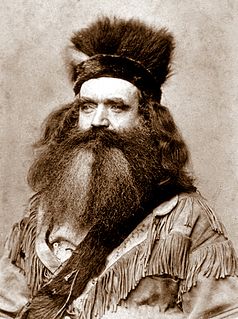 W
WSeth Kinman was an early settler of Humboldt County, California, a hunter based in Fort Humboldt, a famous chair maker, and a nationally recognized entertainer. He stood over 6 ft (1.83 m) tall and was known for his hunting prowess and his brutality toward bears and Indian warriors. Kinman claimed to have shot a total of over 800 grizzly bears, and, in a single month, over 50 elk. He was also a hotel keeper, saloon keeper, and a musician who performed for President Lincoln on a fiddle made from the skull of a mule.
 W
WThe LaRue family was a family of American pioneers, primarily in Virginia and Kentucky, in the 18th and 19th centuries.
 W
WLincoln Homestead State Park is a state park located just north of Springfield, Kentucky in Washington County. The park encompasses 120 acres (49 ha), and features both historic buildings and reconstructions associated with Thomas Lincoln, father of President Abraham Lincoln.
 W
WMary Todd Lincoln House in Lexington, Kentucky, USA, was the girlhood home of Mary Todd, the future first lady and wife of the 16th President, Abraham Lincoln. Today the fourteen-room house is a museum containing period furniture, portraits, and artifacts from the Todd and Lincoln families. The museum introduces visitors to the complex life of Mary Todd Lincoln, from her refined upbringing in a wealthy, slave-holding family to her reclusive years as a mourning widow.
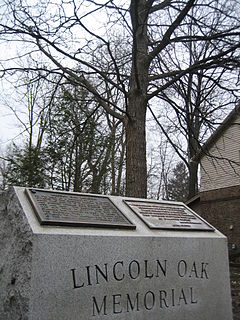 W
WThe Lincoln Oak was an oak tree in Bloomington, Illinois. Stephen A. Douglas and Abraham Lincoln both gave speeches at the tree during the 1850s. The original Lincoln Oak died in 1976.
 W
WLincoln Pioneer Village is a memorial along the Ohio River in Rockport, Spencer County, Indiana to President Abraham Lincoln who lived in the county during his boyhood years. It was built in 1934 and 1935 in the city park by the Works Progress Administration. George Honig, an artist and sculptor from Spencer County, designed the memorial. He also oversaw the building of the pioneer village replica, which was sponsored by the Spencer County Historical Society and the Rockport City Council. It was listed as a historic district on the National Register of Historic Places on April 20, 1998.
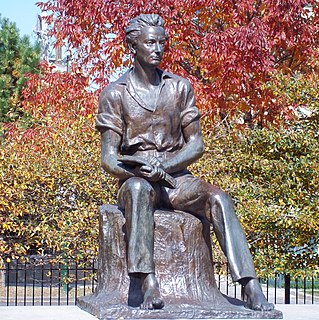 W
WAbraham Lincoln was born on February 12, 1809, in a one-room log cabin on the Sinking Spring farm, south of Hodgenville in Hardin County, Kentucky. His siblings were Sarah Lincoln Grigsby and Thomas Lincoln, Jr. After a land title dispute forced the family to leave in 1811, they relocated to Knob Creek farm, eight miles to the north. By 1814, Thomas Lincoln, Abraham's father, had lost most of his land in Kentucky in legal disputes over land titles. In 1816, Thomas and Nancy Lincoln, their nine-year-old daughter Sarah, and seven-year-old Abraham moved to what became Indiana, where they settled in Hurricane Township, Perry County, Indiana.
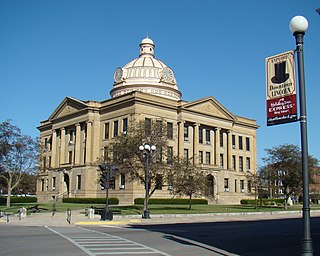 W
WLincoln is a city in Logan County, Illinois, United States. It is the only town in the United States that was named for Abraham Lincoln before he became president; he practiced law there from 1847 to 1859. First settled in the 1830s, Lincoln is home to two colleges and two prisons. The two colleges are Lincoln College and Lincoln Christian University. It is also the home of the world's largest covered wagon and numerous other historical sites along the Route 66 corridor.
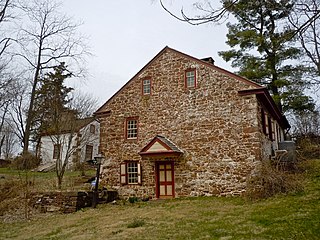 W
WThe Mordecai Lincoln House is a historic house in Exeter Township, Berks County, Pennsylvania built c. 1733 by Mordecai Lincoln, the great-great-grandfather of President Abraham Lincoln. The house stands in the narrow valley of Hiester Creek on a 9-acre plot near the village of Lorane on Lincoln Road.
 W
WLincoln's Birthday is a legal, public holiday in some U.S. states, observed on the anniversary of Abraham Lincoln's birth on February 12, 1809 in Hodgenville, Kentucky. Connecticut, Illinois, Indiana, Ohio, Texas, California, Missouri, and New York observe the holiday.
 W
WThere have been several stories about the ghosts of former Presidents of the United States revisiting the White House, with perhaps the most common and popular one being that of Abraham Lincoln. Lincoln's Ghost, otherwise known as The White House Ghost, is said to have haunted the White House since his death in 1865. Lincoln's ghost has also been said to haunt many of his former residences in Springfield, Illinois including his former law office.
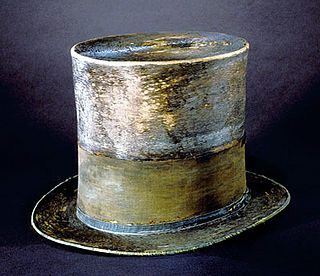 W
WThis is a list of artifacts and relics related to the life, 1865 death, and legacy of United States President Abraham Lincoln, his presidency, and his family.
 W
WThere are 130 known photographs of Abraham Lincoln.Lincoln's features were the despair of every artist who undertook his portrait. The writer saw nearly a dozen, one after another, soon after the first nomination to the presidency, attempt the task. They put into their pictures the large, rugged features, and strong, prominent lines; they made measurements to obtain exact proportions; they "petrified" some single look, but the picture remained hard and cold. Even before these paintings were finished it was plain to see that they were unsatisfactory to the artists themselves, and much more so to the intimate friends of the man this was not he who smiled, spoke, laughed, charmed. The picture was to the man as the grain of sand to the mountain, as the dead to the living. Graphic art was powerless before a face that moved through a thousand delicate gradations of line and contour, light and shade, sparkle of the eye and curve of the lip, in the long gamut of expression from grave to gay, and back again from the rollicking jollity of laughter to that serious, far away look that with prophetic intuitions beheld the awful panorama of war, and heard the cry of oppression and suffering. There are many pictures of Lincoln; there is no portrait of him.
 W
WLittle Pigeon Creek Community, also known as Little Pigeon Creek Settlement and Little Pigeon River settlement, was a settlement in present Carter and Clay Townships, Spencer County, Indiana along Little Pigeon Creek. The community, in the area of present-day Lincoln City, Indiana, was established from frontier land by 1816. There were sufficient settlers to the Indiana wilderness that it became a state in December, 1816.
 W
WFrank McGlynn Sr. was an American stage and screen actor who in a career that spanned more than half a century is best known for his convincing impersonations and performances as Abraham Lincoln in both plays and films.
 W
WOak Ridge Cemetery is a cemetery located in Springfield, Illinois, in the United States.
 W
WOld Bob or Old Robin was a driving horse used by Abraham Lincoln during the period prior to his presidency of the United States. He later participated in Lincoln's funeral. Old Bob's exact fate and date of death are unknown; he was sold to drayman John Flynn by Lincoln in 1860.
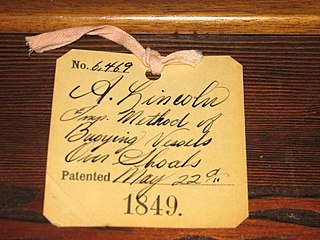 W
WAbraham Lincoln's patent relates to an invention to lift boats over shoals and obstructions in a river. It is the only United States patent ever registered to a President of the United States. Lincoln conceived the idea of inventing a mechanism that would lift a boat over shoals and obstructions when on two occasions the boat on which he traveled got hung up on obstructions. The original documentation of this patent was rediscovered in 1997.
 W
WThe Peekskill Freight Depot, sometimes called the Lincoln Depot, is located at 41 South Water Street in Peekskill, New York. It is a brick building erected in the late 19th century.
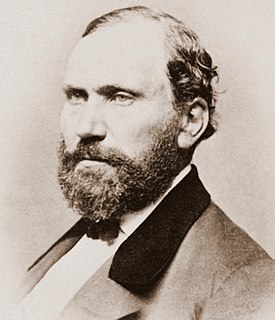 W
WAllan J. Pinkerton was a Scottish–American detective and spy, best known for creating the Pinkerton National Detective Agency.
 W
WThe religious views of Abraham Lincoln are a matter of interest among scholars and the public. Lincoln grew up in a highly religious Baptist family. He never joined any Church, and was a skeptic as a young man and sometimes ridiculed revivalists. He frequently referred to God and had a deep knowledge of the Bible, often quoting it. Lincoln attended Protestant church services with his wife and children, and after two of them died he became more intensely concerned with religion. Some argue that Lincoln was neither a Christian believer nor a secular freethinker.
 W
WAnn Rutledge was allegedly Abraham Lincoln's first love.
 W
WThe Sangamon River is a principal tributary of the Illinois River, approximately 246 miles (396 km) long, in central Illinois in the United States. It drains a mostly rural agricultural area between Peoria and Springfield. The river is associated with the early career of Abraham Lincoln and played an important role in early European settlement of Illinois, when the area around was known as the "Sangamon River Country". The section of the Sangamon River that flows through Robert Allerton Park near Monticello was named a National Natural Landmark in 1971.
 W
WJoshua Fry Speed was a close friend of Abraham Lincoln from his days in Springfield, Illinois, where Speed was a partner in a general store. Later, Speed was a farmer and a real estate investor in Kentucky, and also served one term in the Kentucky House of Representatives in 1848.
 W
WJohn Todd Stuart was a lawyer and a U.S. Representative from Illinois.
 W
WJames L. Swanson is an American author and historian famous for his New York Times best-seller Manhunt: The 12-Day Chase for Lincoln's Killer, for which he earned an Edgar Award.
 W
W W
W W
W W
W